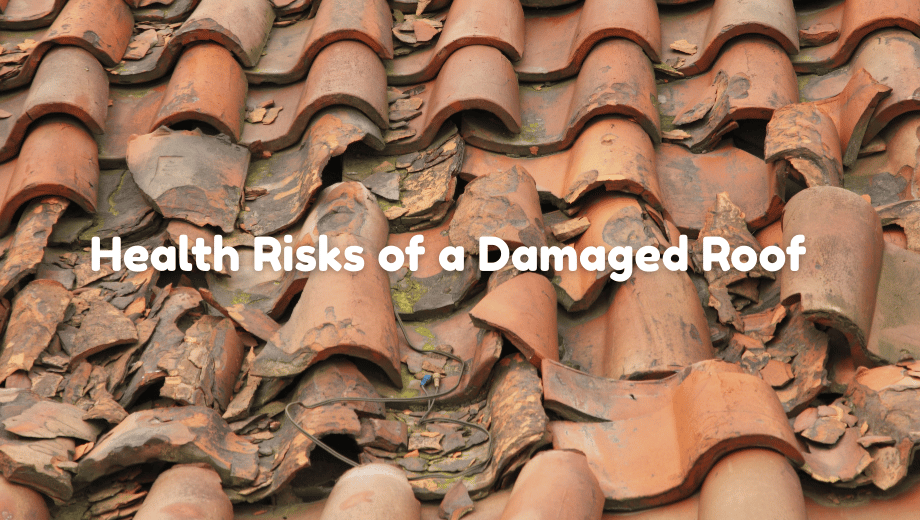A roof is more than just a structural feature; it’s a barrier that protects your home from the elements and safeguards the health of everyone inside. When it becomes damaged, whether through age, severe weather, or neglect, the problems go far beyond aesthetics or property value. A compromised roof can contribute to a range of health concerns that many homeowners don’t realize until symptoms appear.
From poor air quality to structural hazards, the consequences of roof damage can have long-lasting effects. Understanding these risks can help you take preventive measures before they impact your well-being.
Mold and Mildew Growth
One of the most common health hazards linked to roof damage is mold growth. When a roof leaks, even in small amounts, moisture can seep into ceilings, walls, and insulation. This damp environment becomes a breeding ground for mold and mildew, which release spores into the air.
Exposure to mold spores can trigger allergic reactions, asthma attacks, and other respiratory issues. People with compromised immune systems, children, and the elderly are particularly vulnerable. In severe cases, long-term exposure to mold can lead to chronic sinus infections, persistent coughs, and even skin irritation.
Identifying leaks early and ensuring prompt repairs can prevent these hidden moisture pockets from forming, protecting both your home and your health.
Contaminated Indoor Air Quality
Roof damage doesn’t just let water in; it can let dust, pollen, and other outdoor pollutants infiltrate your home. These particles can worsen allergies, aggravate respiratory conditions, and lower indoor air quality. Roofing contractors such as those at https://321gutterdone.com/ can inspect for visible leaks and areas where your roofing materials or ventilation systems might allow unfiltered air into your living spaces. Proper sealing, ventilation improvements, and timely repairs can help ensure that the air you breathe indoors remains as clean and safe as possible.
Increased Risk of Pest Infestations
Gaps, holes, or loose shingles from roof damage can create entry points for pests such as rodents, birds, and insects. Once inside, these pests can carry bacteria, viruses, and allergens that contribute to health problems. Rodent droppings can trigger asthma symptoms, while bird droppings may spread fungal infections like histoplasmosis.
Even insect infestations, such as termites or carpenter ants, can indirectly affect health by weakening wood structures and creating unsafe conditions in the home. A thorough roof inspection can identify and seal off these potential entryways before pests have a chance to move in.
Structural Hazards and Injury Risks
When roof damage compromises the integrity of your home, it poses more than just cosmetic concerns; it can create serious physical dangers. Water infiltration can weaken ceilings and attic floors, increasing the risk of collapse. Loose or damaged roofing materials may fall during storms, posing a hazard to anyone nearby.
Sagging ceilings or bowing walls caused by water damage can lead to injuries if they give way unexpectedly. By addressing roof problems promptly, you can help ensure that your living environment remains structurally sound and safe for everyone inside.
Chronic Stress and Mental Health Strain
While physical health risks are often the focus, it’s important not to overlook the impact roof damage can have on mental well-being. Living with ongoing leaks, visible mold, or pest infestations can create constant stress and anxiety. The noise of pests, the smell of dampness, and the uncertainty about the extent of the damage can all take a toll on your peace of mind.
This stress can contribute to sleep disturbances, headaches, and even lowered immunity, making you more susceptible to illness. Taking proactive steps to repair your roof and address related issues can restore your home’s condition and your mental comfort.

Energy Inefficiency and Temperature Regulation Issues
A damaged roof can interfere with your home’s ability to regulate temperature. Gaps, cracks, and missing insulation caused by water damage or material deterioration allow heat to escape during winter and enter during summer. This can lead to uncomfortable indoor temperatures, which may affect your quality of sleep, energy levels, and well-being.
HVAC systems have to work harder to maintain comfortable conditions, potentially circulating more dust and allergens as they operate. Repairing your roof and restoring proper insulation can help keep your home comfortable year-round while reducing strain on your heating and cooling systems.
Preventing Long-Term Health Risks
Preventive care is always better than reactive fixes when it comes to your roof. Scheduling regular inspections after severe weather events can help catch minor issues before they escalate.
Look for warning signs such as water stains on ceilings, musty odors, increased allergy symptoms, or visible damage to shingles and flashing. Partnering with experienced roofing professionals ensures that repairs are handled thoroughly and effectively, reducing the likelihood of recurring issues that could harm your health.
A damaged roof is more than an inconvenience; it’s a potential health hazard that can affect you and your family. From mold and poor air quality to structural dangers and stress, the risks are real and wide-ranging. By staying vigilant, scheduling regular inspections, and addressing repairs promptly, you can safeguard both your property and your well-being.
Taking roof maintenance seriously is an investment in your home’s longevity and in the health and comfort of everyone who lives there.




